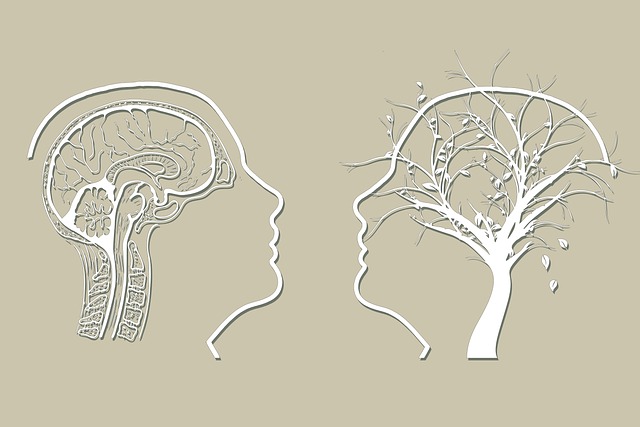Boulder Exposure and Response Prevention (BERT) Therapy is a specialized, effective approach to managing traumatic experiences, combining exposure therapy with response prevention. This safe, structured method helps individuals confront fears, learn new coping strategies, reduce anxiety, and boost confidence through individualized assessment, education, gradual exposure, facing fears, and mental wellness coaching. Integrating BERT with burnout prevention for healthcare providers, social skills training, and holistic support creates a robust ecosystem for trauma survivors and support personnel, enhancing resilience and overall psychological well-being.
Trauma support services are vital in helping individuals heal from the profound effects of traumatic experiences. This article explores effective strategies, focusing on Boulder Exposure and Response Prevention (BERP) Therapy, a revolutionary approach. We’ll delve into understanding trauma, its impact, and how BERP Therapy provides a structured path to recovery. Additionally, we offer a step-by-step guide for service providers implementing this therapy, emphasizing the building blocks of a robust trauma support system.
- Understanding Trauma and Its Impact
- What is Boulder Exposure and Response Prevention (BERP) Therapy?
- Implementing BERP Therapy: A Step-by-Step Guide for Service Providers
- Building a Comprehensive Trauma Support System
Understanding Trauma and Its Impact

Trauma is a profound and complex experience that can have lasting effects on an individual’s mental wellness and emotional well-being. It often arises from overwhelming, life-threatening, or deeply distressing events, such as accidents, violence, or natural disasters. Understanding trauma involves recognizing its diverse manifestations and the range of responses it can evoke. This includes both immediate reactions like shock and dissociation, as well as long-term effects that can persist without appropriate intervention.
In the context of mental health support, Boulder Exposure and Response Prevention Therapy (ERPT) offers a targeted approach to address trauma. ERPT combines exposure therapy with response prevention techniques, focusing on helping individuals confront and process traumatic memories while learning to manage their emotional responses. By employing empathy-building strategies and emotional well-being promotion techniques, this therapy fosters a safe space for clients to explore and heal from past traumas, ultimately enhancing their resilience and overall mental wellness.
What is Boulder Exposure and Response Prevention (BERP) Therapy?

Boulder Exposure and Response Prevention (BERP) Therapy is a highly effective form of treatment designed to help individuals manage and overcome traumatic experiences. This innovative approach combines exposure therapy with response prevention techniques, focusing on reducing anxiety and fear triggered by traumatic memories or situations. By gradually exposing clients to distressing stimuli in a safe and controlled environment, BERP enables them to confront their fears and learn new coping strategies.
The therapy involves a comprehensive risk assessment for mental health professionals to ensure the client’s safety during treatment. Through this process, therapists gain insights into potential risks and develop tailored strategies to enhance anxiety relief and boost confidence. By addressing underlying issues and providing practical tools, BERP Therapy empowers individuals to navigate their trauma-related challenges with greater resilience and improved mental well-being.
Implementing BERP Therapy: A Step-by-Step Guide for Service Providers

Implementing Boulder Exposure and Response Prevention (BERP) Therapy is a structured approach to support individuals who have experienced trauma. This evidence-based practice involves guiding clients through gradual, controlled exposure to traumatic memories or situations, combined with response prevention techniques to reduce avoidance behaviors. By following these steps, service providers can effectively deliver BERP:
1. Assess and Individualize: Begin by thoroughly assessing the client’s history and current symptoms. Tailor the treatment plan to their specific needs, ensuring it aligns with their cultural background and personal preferences.
2. Educate and Build Trust: Educate the client about BERP Therapy, explaining its benefits and what they can expect during sessions. Building a strong therapeutic alliance is crucial; ensure they feel safe and supported throughout the process.
3. Gradual Exposure: Help clients identify specific trauma-related triggers or memories. Start with less distressing scenarios and gradually move towards more challenging ones. This step-by-step approach allows for a safe exploration of traumatic experiences.
4. Encourage Facing Fears: During exposure exercises, support clients in confronting their fears while preventing avoidance behaviors. Teach them coping strategies to manage anxiety, such as deep breathing or grounding techniques, to enhance their inner strength and mental wellness.
5. Strengthen Coping Skills: Incorporate mental wellness coaching programs to help individuals develop effective coping mechanisms. These skills empower them to manage symptoms and promote long-term mental wellness development.
Building a Comprehensive Trauma Support System

Building a robust trauma support system involves integrating various specialized services to cater to the diverse needs of individuals affected by traumatic events. One effective approach gaining traction is Boulder Exposure and Response Prevention Therapy (BERT), which focuses on helping clients confront and manage their traumatic memories in a controlled environment. BERT combines exposure therapy with response prevention techniques, enabling individuals to reduce avoidance behaviors and anxiety triggered by trauma reminders.
Complementing BERT, Burnout Prevention Strategies for Healthcare Providers are essential components of a comprehensive system. These strategies prioritize self-care and resilience among professionals who frequently interact with traumatized individuals. Social Skills Training and Mental Wellness programs also play crucial roles in fostering supportive communities where survivors can connect, share experiences, and develop coping mechanisms. Integrating these diverse elements creates a holistic ecosystem that effectively addresses trauma, promotes healing, and empowers both survivors and support personnel.
Trauma support services have evolved to include effective approaches like Boulder Exposure and Response Prevention (BERP) Therapy, offering hope and healing for those affected by traumatic experiences. By understanding trauma’s profound impact and implementing structured therapies, service providers can create comprehensive systems that effectively address complex needs. BERP Therapy, in particular, provides a structured framework to help individuals confront and manage their responses to trauma, ultimately fostering resilience and improving quality of life. A step-by-step guide for implementation ensures consistent, effective care, making it a valuable tool in building robust trauma support systems.














